Introduction To Cinematography

- 1.
A point of view shot:
- A.
Shows what a character sees.
- B.
Shows a close up of a character.
- C.
Is when the camera is positioned over a character's shoulder.
- D.
Is a close up of a character's face.
Correct Answer
A. Shows what a character sees.Explanation
A point of view shot is a cinematic technique that shows the audience what a character sees. It allows the viewer to experience the scene from the character's perspective, giving a sense of immersion and empathy. This shot is often used to create tension, suspense, or to show the character's reaction to something. By showing the audience what the character sees, it helps to convey their emotions, thoughts, and point of view.Rate this question:
-
- 2.
The most appropriate shot size for showing the emotions on a character's face is…
- A.
Extreme long shot.
- B.
Long shot.
- C.
Full shot.
- D.
Mid shot.
- E.
Close up.
- F.
Extreme close up.
Correct Answer
E. Close up.Explanation
A close up shot is the most appropriate shot size for showing the emotions on a character's face because it allows the audience to see the details and expressions on the character's face more clearly. This shot size focuses solely on the character's face, eliminating any distractions and allowing the audience to connect with the character on a deeper emotional level. It brings the audience closer to the character and helps in conveying their emotions effectively.Rate this question:
-
- 3.
The most appropriate shot size for showing a character's wristwatch is…
- A.
Extreme long shot.
- B.
Long shot.
- C.
Full shot.
- D.
Mid shot.
- E.
Close up.
- F.
Extreme close up.
Correct Answer
F. Extreme close up.Explanation
An extreme close up shot would be the most appropriate shot size for showing a character's wristwatch because it allows for a detailed focus on the watch, highlighting its features and emphasizing its importance. This shot size is typically used for emphasizing small details and creating a sense of intimacy or significance.Rate this question:
-
- 4.
If you want to show what a character is looking at, the most appropriate shot would be…
- A.
Extreme long shot.
- B.
Long shot.
- C.
Full shot.
- D.
Point of view shot.
- E.
Two shot.
- F.
Over the shoulder shot.
Correct Answer
D. Point of view shot.Explanation
A point of view shot is the most appropriate shot to show what a character is looking at because it allows the audience to see the scene from the character's perspective. This shot helps to create a sense of immersion and allows the audience to experience the story through the character's eyes.Rate this question:
-
- 5.
A zoom is…
- A.
When the camera lens magnifies an image.
- B.
When the camera is mounted on a moving platform and approaches the subject.
- C.
The camera operator wears a special vest to achieve smooth handheld camera movement.
- D.
The camera is handheld.
Correct Answer
A. When the camera lens magnifies an image.Explanation
A zoom is when the camera lens magnifies an image. This allows the camera operator to adjust the focal length and bring the subject closer or farther away without physically moving the camera. By changing the focal length, the camera can either zoom in to make the subject appear larger or zoom out to make it appear smaller. This technique is commonly used in photography and filmmaking to capture different perspectives and emphasize certain elements of the scene.Rate this question:
-
- 6.
A 'dolly in' is…
- A.
When the camera lens magnifies an image.
- B.
When the camera is mounted on a moving platform and approaches the subject.
- C.
The camera operator wears a special vest to achieve smooth handheld camera movement.
- D.
The camera is handheld.
Correct Answer
B. When the camera is mounted on a moving platform and approaches the subject.Explanation
A "dolly in" refers to when the camera is mounted on a moving platform and approaches the subject. This technique allows the camera to smoothly move towards the subject, creating a sense of depth and perspective. It is commonly used in filmmaking to enhance the visual storytelling and create a dynamic shot.Rate this question:
-
- 7.
A steadicam is…
- A.
A platform that the camera moves on.
- B.
A vest that the camera operator wears to achieve smooth camera movement.
- C.
A set of tracks that the camera is mounted on.
- D.
An in-camera filter to stabilise footage.
Correct Answer
B. A vest that the camera operator wears to achieve smooth camera movement.Explanation
A steadicam is a vest that the camera operator wears to achieve smooth camera movement. This device helps to stabilize the camera and reduce any shakes or vibrations that may occur while filming. By wearing the vest, the camera operator can move freely and smoothly, resulting in steady and professional-looking footage.Rate this question:
-
- 8.
A type of camera movement that follows the subject is called:
- A.
A dolly shot.
- B.
A steadicam shot.
- C.
A tracking shot.
- D.
A handheld shot.
Correct Answer
C. A tracking shot.Explanation
A tracking shot is a type of camera movement where the camera follows the subject as it moves through the scene. This technique is often used to create a sense of movement and to keep the subject in focus. Unlike a dolly shot, which involves moving the entire camera setup on a wheeled platform, a tracking shot typically involves the use of a specialized camera rig or equipment to smoothly track the subject's movement. A steadicam shot refers to a specific type of camera stabilization system, while a handheld shot refers to a shot that is intentionally made to appear shaky or unsteady.Rate this question:
-
- 9.
High angle shots have the effect of:
- A.
Making the subject seem powerful.
- B.
Making the subject seem powerless.
- C.
Making the audience identify with a character.
- D.
Engaging the audience.
Correct Answer
B. Making the subject seem powerless.Explanation
High angle shots have the effect of making the subject seem powerless. This is because when the camera is positioned above the subject, it creates a sense of dominance or superiority, making the subject appear smaller and less significant. This can be used to convey vulnerability or weakness in a character, emphasizing their lack of control or power in a situation.Rate this question:
-
- 10.
Low angle shots have the effect of:
- A.
Making the subject seem powerful.
- B.
Making the subject seem powerless.
- C.
Making the audience identify with a character.
- D.
Engaging the audience.
Correct Answer
A. Making the subject seem powerful.Explanation
Low angle shots are taken from a low position, looking up at the subject. This camera angle creates the illusion of height and dominance, making the subject appear powerful and authoritative. It can also make the subject seem larger than life and create a sense of awe or intimidation. By looking up at the subject, the low angle shot can evoke a feeling of admiration or respect from the audience, reinforcing the subject's power and importance.Rate this question:
-
- 11.
Point of view shots have the effect of:
- A.
Making the subject seem powerful.
- B.
Making the subject seem powerless.
- C.
Making the audience identify with a character.
- D.
Engaging the audience.
Correct Answer
C. Making the audience identify with a character.Explanation
Point of view shots, where the camera angle is positioned from the perspective of a character, have the effect of making the audience identify with that character. By seeing the world through the character's eyes, the audience is able to experience the story from their point of view, creating a stronger emotional connection and understanding of the character's thoughts and feelings. This technique allows the audience to become more engaged in the narrative and empathize with the character's experiences.Rate this question:
-
- 12.
The framing technique demonstrated in this diagram is…
- A.
The rule of thirds.
- B.
The 180 degree rule.
- C.
The 30 degree rule.
- D.
Head room.
- E.
Look room.
Correct Answer
A. The rule of thirds.Explanation
The correct answer is the rule of thirds. The rule of thirds is a composition technique used in photography and cinematography. It involves dividing the frame into a grid of nine equal sections using two horizontal and two vertical lines. The main subjects of the image are then placed along these lines or at the intersections, creating a more balanced and visually appealing composition. This technique helps to create a sense of depth and interest in the image.Rate this question:
-
- 13.
The rule demonstrated in this diagram is…
- A.
The rule of thirds.
- B.
The 180 degree rule.
- C.
The 30 degree rule.
- D.
Head room.
- E.
Look room.
Correct Answer
B. The 180 degree rule.Explanation
The correct answer is the 180 degree rule. This rule is a guideline used in filmmaking and photography to ensure continuity and smoothness in the visual storytelling. It states that an imaginary line called the axis of action should be maintained between two characters or elements in a scene. By not crossing this line, the camera can capture the action from different angles while maintaining the spatial relationship between the subjects. This helps to create a coherent and visually pleasing sequence of shots.Rate this question:
-
- 14.
The framing technique demonstrated in this diagram is…
- A.
The rule of thirds.
- B.
The 180 degree rule.
- C.
The 30 degree rule.
- D.
Head room.
- E.
Look room.
Correct Answer
E. Look room.Explanation
The framing technique demonstrated in this diagram is "look room". Look room refers to the space in front of a subject's gaze, allowing them to look or move towards an open area within the frame. This technique is commonly used in cinematography to create a more natural and balanced composition.Rate this question:
-
- 15.
The 'rule of thirds' is:
- A.
An aesthetically pleasing way to compose a shot.
- B.
A shot with two characters in the frame.
- C.
A space between the character and the edge of the frame suggesting they are talking to someone outside the shot.
- D.
A rule of composition which dictates an aesthetically pleasing space between the actor and the top of the frame.
Correct Answer
A. An aesthetically pleasing way to compose a shot.Explanation
The 'rule of thirds' refers to a guideline in photography and cinematography that suggests dividing the frame into nine equal parts using two horizontal and two vertical lines. The points where these lines intersect are considered to be the most visually appealing positions to place the main subjects of the shot. By following this rule, the composition of the shot becomes more balanced and visually interesting, resulting in a more aesthetically pleasing image.Rate this question:
-
- 16.
A 'two shot' is:
- A.
An aesthetically pleasing way to compose a shot.
- B.
A shot with two characters in the frame.
- C.
A space between the character and the edge of the frame suggesting they are talking to someone outside the shot.
- D.
A rule of composition which dictates an aesthetically pleasing space between the actor and the top of the frame.
Correct Answer
B. A shot with two characters in the frame.Explanation
A 'two shot' refers to a shot in which two characters are present within the frame. This shot is commonly used in filmmaking to show interactions and relationships between characters. It allows the audience to observe the dynamics between the two characters and their reactions to each other.Rate this question:
-
- 17.
'Look room' is:
- A.
An aesthetically pleasing way to compose a shot.
- B.
A shot with two characters in the frame.
- C.
A space between the character and the edge of the frame suggesting they are talking to someone or looking at something outside the shot.
- D.
A rule of composition which dictates an aesthetically pleasing space between the actor and the top of the frame.
Correct Answer
C. A space between the character and the edge of the frame suggesting they are talking to someone or looking at something outside the shot.Explanation
"Look room" refers to the space between the character and the edge of the frame, indicating that the character is interacting with someone or something outside the shot. This concept is used in film composition to suggest that the character is engaged in a conversation or observing something off-screen. It helps to create a sense of depth and context within the frame.Rate this question:
-
- 18.
'Headroom' is:
- A.
An aesthetically pleasing way to compose a shot.
- B.
A shot with two characters in the frame.
- C.
A space between the character and the edge of the frame suggesting they are talking to someone outside the shot.
- D.
A rule of composition which dictates an aesthetically pleasing space between the actor and the top of the frame.
Correct Answer
D. A rule of composition which dictates an aesthetically pleasing space between the actor and the top of the frame.Explanation
"Headroom" refers to the space between the actor's head and the top of the frame in a shot. This rule of composition suggests that there should be a visually pleasing amount of space between the actor and the top of the frame. It helps to create balance and allows the viewer to focus on the actor's facial expressions and body language.Rate this question:
-
- 19.
Which type of shot size best describes this illustration?
- A.
Extreme long shot.
- B.
Long shot.
- C.
Full shot.
- D.
Mid shot.
- E.
Medium Close up.
- F.
Extreme close up.
Correct Answer
E. Medium Close up.Explanation
The illustration is showing a subject that is framed from the chest up, allowing for some detail of the face and upper body. This shot size is commonly referred to as a medium close up.Rate this question:
-
- 20.
This image demonstrates poor use of:
- A.
The 180 degree rule.
- B.
The 30 degree rule.
- C.
Look room.
- D.
Headroom.
- E.
Eyeline match.
Correct Answer
D. Headroom.Explanation
This image demonstrates poor use of headroom. Headroom refers to the space between the top of a person's head and the top of the frame in a shot. In this image, there is too much headroom, meaning that there is a large gap between the person's head and the top of the frame. This can make the shot feel unbalanced and can draw attention away from the subject. To improve the composition, the photographer should have framed the shot with less headroom, ensuring that the subject's head is closer to the top of the frame.Rate this question:
-
- 21.
This image demonstrates poor use of:
- A.
The 180 degree rule.
- B.
The 30 degree rule.
- C.
Look room.
- D.
Headroom.
- E.
Eyeline match.
Correct Answer
C. Look room.Explanation
The image demonstrates poor use of "look room," which refers to the space in front of a person or object that they are looking towards. In this case, the image likely shows a subject looking towards the edge of the frame, with little or no space for them to "look into." This can create a cramped or uncomfortable composition, as it feels like the subject is about to run into the edge of the frame.Rate this question:
-
- 22.
Zooming in and out is the best way to shoot a scene.
- A.
True
- B.
False
Correct Answer
B. FalseExplanation
Zooming in and out is not necessarily the best way to shoot a scene. The best way to shoot a scene depends on various factors such as the desired composition, the story being told, and the desired effect on the audience. Zooming in and out can be used creatively to add emphasis or create a specific visual effect, but it is not always the most effective technique. Other factors such as framing, camera movement, and shot selection also play a significant role in capturing a scene effectively.Rate this question:
-
- 23.
The best shot size to describe this shot is:
- A.
Very long shot.
- B.
Long shot.
- C.
Full shot.
- D.
Mid shot.
- E.
Close up.
- F.
Extreme close up.
Correct Answer
A. Very long shot.Explanation
A very long shot is the best shot size to describe this shot because it captures the subject from a significant distance, showing a large portion of the surrounding environment. This shot is often used to establish the setting or to emphasize the subject's isolation or insignificance within the larger context.Rate this question:
-
- 24.
The best shot size to describe this shot is:
- A.
Extreme long shot.
- B.
Long shot.
- C.
Mid shot.
- D.
Close up.
- E.
Extreme close up.
Correct Answer
B. Long shot.Explanation
The best shot size to describe this shot is a long shot because it captures the subject from a distance, showing the subject in its entirety within the frame. It provides context and allows the viewer to see the subject in relation to its surroundings.Rate this question:
-
- 25.
The best shot size to describe this shot is:
- A.
Extreme long shot.
- B.
Long shot.
- C.
Full shot.
- D.
Mid shot.
- E.
Close up.
- F.
Extreme close up.
Correct Answer
D. Mid shot.Explanation
A mid shot is the best shot size to describe this shot because it captures the subject from the waist up, allowing for a closer view of their facial expressions and body language while still showing some of the surrounding environment. This shot is not too close to be considered a close-up, but also not too far to be considered a long shot or extreme long shot.Rate this question:
-
- 26.
The best shot size to describe this shot is:
- A.
Extreme long shot.
- B.
Long shot.
- C.
Full shot.
- D.
Mid shot.
- E.
Close up.
- F.
Extreme close up.
Correct Answer
E. Close up.Explanation
The best shot size to describe this shot is close up because it focuses on a specific subject or detail, capturing their facial expressions or emotions. This shot typically frames the subject from the shoulders up, providing a more intimate view and emphasizing their features. It allows the audience to connect with the subject on a deeper level and is often used to convey important moments or reactions.Rate this question:
-
- 27.
The best shot size to describe this shot is:
- A.
Extreme long shot.
- B.
Long shot.
- C.
Full shot.
- D.
Mid shot.
- E.
Close up.
- F.
Extreme close up.
Correct Answer
F. Extreme close up.Explanation
An extreme close up shot focuses on a specific detail or feature of a subject, capturing it in great detail and emphasizing its importance or significance. This shot size is used to create intimacy and convey intense emotions. In this case, the best shot size to describe the shot would be an extreme close up as it suggests that the shot is focusing on a specific detail or feature of the subject.Rate this question:
-
- 28.
The best camera angle to describe this shot is:
- A.
Overshot or Bird's Eye View
- B.
High angle
- C.
Eye level.
- D.
Low angle.
- E.
Undershot.
Correct Answer
A. Overshot or Bird's Eye ViewExplanation
The best camera angle to describe this shot is overshot or bird's eye view because it provides a unique perspective from above, allowing the viewer to see the entire scene and gain a better understanding of the spatial relationships between the elements. This angle is often used to emphasize the scale or layout of a location, and it can create a sense of detachment or omniscience for the viewer.Rate this question:
-
- 29.
The best camera angle to describe this shot is:
- A.
Overshot.
- B.
High angle
- C.
Eye level.
- D.
Low angle.
- E.
Undershot.
Correct Answer
B. High angleExplanation
A high angle camera angle would be the best choice to describe this shot. This angle is achieved by positioning the camera above the subject, looking down on it. It provides a sense of dominance or superiority over the subject, making them appear smaller or weaker. This angle can be used to convey a sense of vulnerability or powerlessness in the subject, depending on the context of the shot.Rate this question:
-
- 30.
The best camera angle to describe this shot is:
- A.
Overshot.
- B.
High angle
- C.
Eye level.
- D.
Low angle.
- E.
Undershot.
Correct Answer
D. Low angle.Explanation
A low angle camera shot is the best angle to describe this shot because it creates a sense of power and dominance. It is often used to depict a subject as strong, important, or intimidating. This angle is achieved by positioning the camera below the subject, looking up at them. In this particular shot, using a low angle would effectively convey a sense of power or dominance, enhancing the overall impact of the scene.Rate this question:
-
- 31.
The most appropriate shot size to establish the film will occur in a city is…
- A.
Extreme long shot/Wide Shot/Establishing Shot
- B.
Long shot.
- C.
Full shot.
- D.
Mid shot.
- E.
Close up.
- F.
Extreme close up.
Correct Answer
A. Extreme long shot/Wide Shot/Establishing ShotExplanation
An extreme long shot, also known as a wide shot or an establishing shot, is the most appropriate shot size to establish the film in a city. This shot size allows the audience to see the entire cityscape and get a sense of the location. It sets the scene and provides context for the story that will unfold.Rate this question:
-
- 32.
The most common transition that is an instant change from one shot to another, and the least obvious transition is called a:
- A.
Dissolve
- B.
Cut
- C.
Wipe
- D.
Fade out
Correct Answer
B. CutExplanation
A cut is the most common and least obvious transition that is an instant change from one shot to another. It involves directly switching from one shot to another without any visual effects or transitions in between. Unlike other transitions like dissolve, wipe, or fade out, a cut is a straightforward and abrupt change that is commonly used in film and video editing to create seamless continuity between shots.Rate this question:
-
- 33.
These shots represent what type of framing?
- A.
Worm's Eye View
- B.
Bird's Eye View
- C.
High Angle
- D.
Dutch Angle/Canted Angle
Correct Answer
D. Dutch Angle/Canted AngleExplanation
The given shots represent a Dutch Angle/Canted Angle framing. This type of framing is achieved by tilting the camera to create a diagonal composition, resulting in a sense of unease or tension. It is often used to convey disorientation or psychological instability in a scene.Rate this question:
-
- 34.
This extreme low angle shot can also be described as a:
- A.
Dog's eye view
- B.
Bird's eye view
- C.
Ground Shot
- D.
Worm's eye view
Correct Answer
D. Worm's eye viewExplanation
A worm's eye view refers to a shot taken from a very low angle, almost at ground level. This perspective gives the viewer the impression of seeing the world from the viewpoint of a worm or insect. In this case, the extreme low angle shot described in the question aligns with the characteristics of a worm's eye view, as it captures the subject from a very low vantage point.Rate this question:
-
- 35.
Frame-within-frame shots can create a feeling of:
- A.
Safety and security
- B.
Entrapment
- C.
Hope
- D.
Distance
Correct Answer
B. EntrapmentExplanation
Frame-within-frame shots can create a feeling of entrapment because they visually confine the subject within a smaller frame within the larger frame of the shot. This technique can evoke a sense of being trapped or confined, emphasizing the subject's lack of freedom or control. The enclosed space created by the frame-within-frame composition can also create a sense of tension or unease, further enhancing the feeling of entrapment.Rate this question:
-
Quiz Review Timeline +
Our quizzes are rigorously reviewed, monitored and continuously updated by our expert board to maintain accuracy, relevance, and timeliness.
-
Current Version
-
Aug 28, 2023Quiz Edited by
ProProfs Editorial Team -
Dec 09, 2013Quiz Created by
Kylie A
 Back to top
Back to top



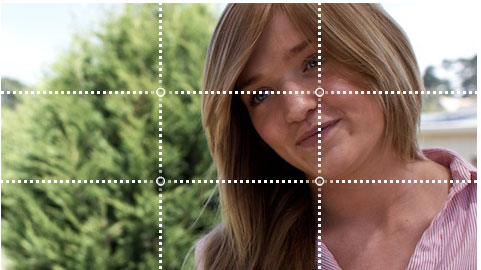
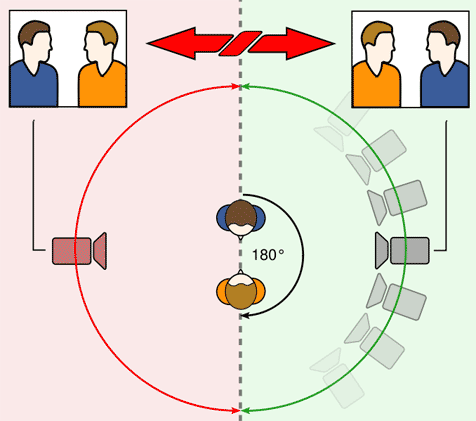
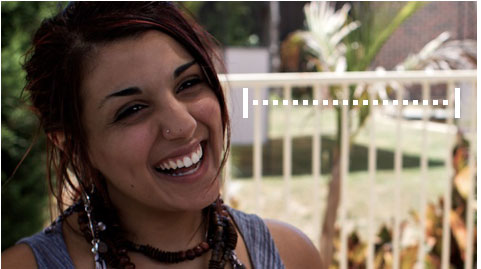
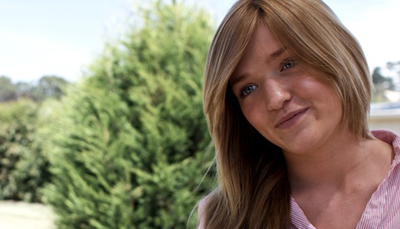


.jpg)



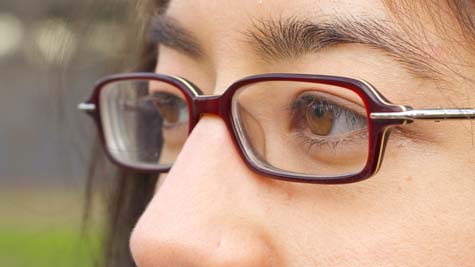
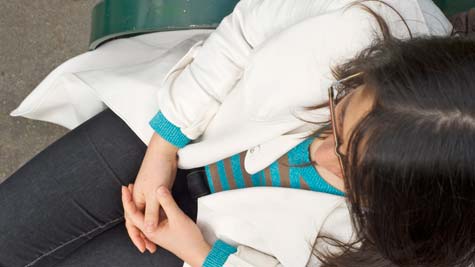
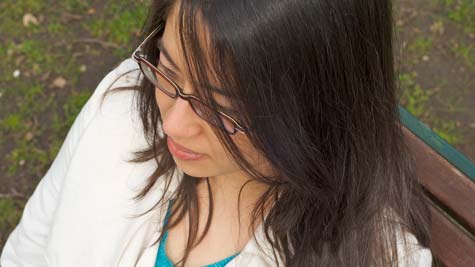
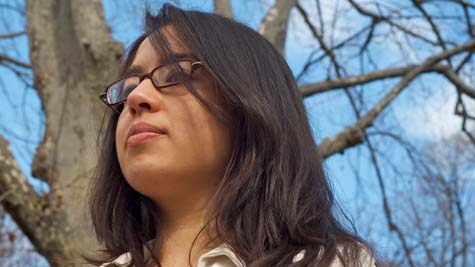
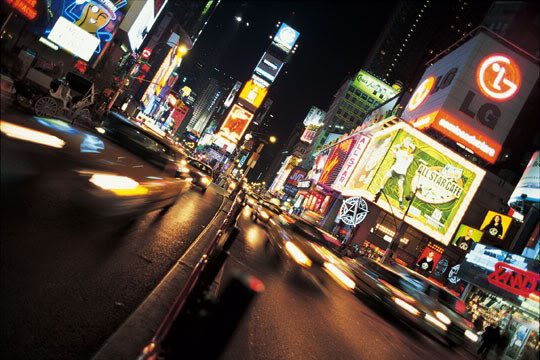

.png)